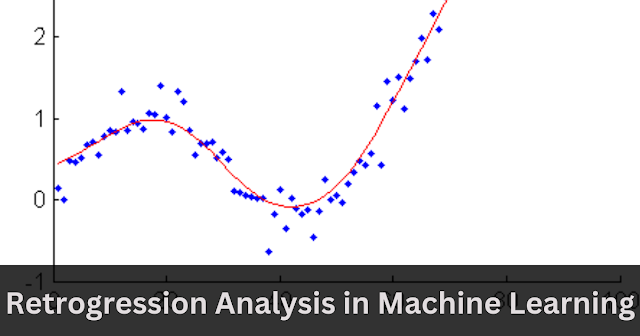1. Introduction
From automated manufacturing processes to robotic companions and surgical assistants, robotics has become an integral part of our society. This article explores the advancements in robotics technology, its applications, and the potential it holds for the future.
2. The Evolution of Robotics Technology
Robotics technology has come a long way since its inception. Initially, robots were confined to controlled environments and performed repetitive tasks on assembly lines. However, with advancements in sensors, actuators, and artificial intelligence, robots are now capable of complex and versatile operations.
3. Applications of Robotics
Robotics finds applications in diverse fields, enhancing productivity, efficiency, and safety. Some key areas where robotics is making a significant impact include:
3.1 Industrial Robotics
They automate repetitive tasks, handle hazardous materials, and perform precision operations with speed and accuracy. Industrial robotics has revolutionized sectors such as automotive, electronics, and logistics.
3.2 Service Robotics
Service robots are designed to interact with humans and assist in various tasks. They can be found in healthcare, hospitality, retail, and domestic environments. Service robots perform functions such as cleaning, surveillance, companionship, and customer service.
3.3 Medical Robotics
Medical robotics has transformed the healthcare industry, enabling precise and minimally invasive procedures. Surgical robots assist surgeons in performing complex surgeries with enhanced precision and control. Robotic exoskeletons aid in rehabilitation and mobility assistance for patients.
4. Advancements in Robotics Technology
Advancements in robotics technology have paved the way for groundbreaking innovations. Some notable advancements include:
4.1 Sensing and Perception
Modern robots are equipped with advanced sensors, including cameras, lidar, and tactile sensors, enabling them to perceive and interact with their environment. This enhances their ability to navigate, detect objects, and respond to changing circumstances.
4.2 Mobility and Locomotion
Robots now have improved mobility capabilities, with the development of legged robots, wheeled robots, and even flying robots. These advancements enable robots to navigate complex terrains, climb stairs, and reach inaccessible areas.
4.3 Human-Robot Interaction
Enhanced human-robot interaction allows for seamless collaboration between humans and robots. Natural language processing, gesture recognition, and facial expression analysis enable intuitive and effective communication, making robots more user-friendly and capable of understanding human intentions.
5. Artificial Intelligence in Robotics
Artificial intelligence (AI) plays a vital role in robotics technology. AI algorithms enable robots to learn from data, adapt to new situations, and make intelligent decisions. Machine learning and deep learning techniques empower robots with capabilities such as object recognition, speech recognition, and autonomous decision-making.
6. The Future of Robotics
The future of robotics holds immense potential for further advancements. As technology progresses, we can expect robots to become more autonomous, versatile, and integrated into our daily lives. Collaborative robots, also known as cobots, will work alongside humans, enhancing productivity and safety. Additionally, the fields of nanorobotics and swarm robotics show promise for applications in medicine, environmental monitoring, and disaster response.
7. Ethical Considerations in Robotics
As robotics technology continues to evolve, ethical considerations are essential. The integration of robots into society raises questions regarding privacy, security, job displacement, and the impact on human well-being. It is crucial to address these concerns through responsible development, regulations, and ongoing discussions on the ethical implications of robotics.
8. Conclusion
Robotics technology has witnessed significant advancements, transforming industries and expanding the possibilities of human-machine collaboration. From industrial automation to service robots and medical applications, robots are playing increasingly important roles. As robotics continues to evolve, it is vital to consider the ethical implications and ensure responsible development to harness its full potential for the betterment of society.
FAQs
Q1: Will robots replace human workers in the future?
Robots are unlikely to replace human workers entirely. While automation may lead to job shifts and changes, human creativity, problem-solving abilities, and social skills will remain valuable in many fields.
Q2: Can robots perform complex surgical procedures without human intervention?
Surgical robots are designed to assist surgeons and enhance precision. They require human oversight and control during procedures, ensuring patient safety and optimal outcomes.
Q3: How can robotics technology benefit healthcare and elderly care?
Robotics technology can improve healthcare and elderly care by assisting with tasks such as patient monitoring, medication management, physical therapy, and companionship. Robots can alleviate the burden on healthcare professionals and enhance patient experiences.
Q4: Are there ethical concerns related to the use of robots in society?
Yes, there are ethical concerns surrounding robotics technology. These include issues such as privacy, security, job displacement, and the potential for misuse. It is crucial to address these concerns through regulations and responsible development.
Q5: What are some potential future applications of robotics technology?
Future applications of robotics technology include nanorobotics for targeted drug delivery, swarm robotics for environmental monitoring, and the use of collaborative robots in various industries to enhance productivity and safety.

.png)

.png)
.png)
.png)
.png)
0 Comments